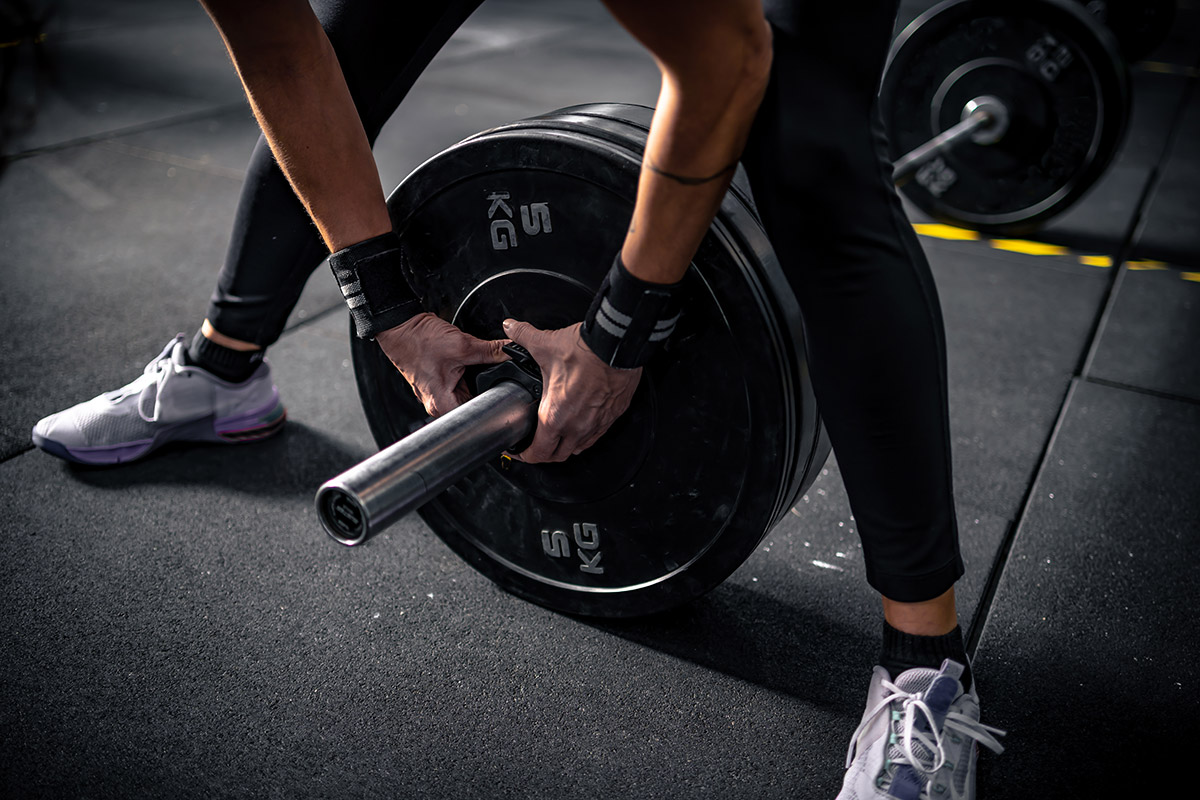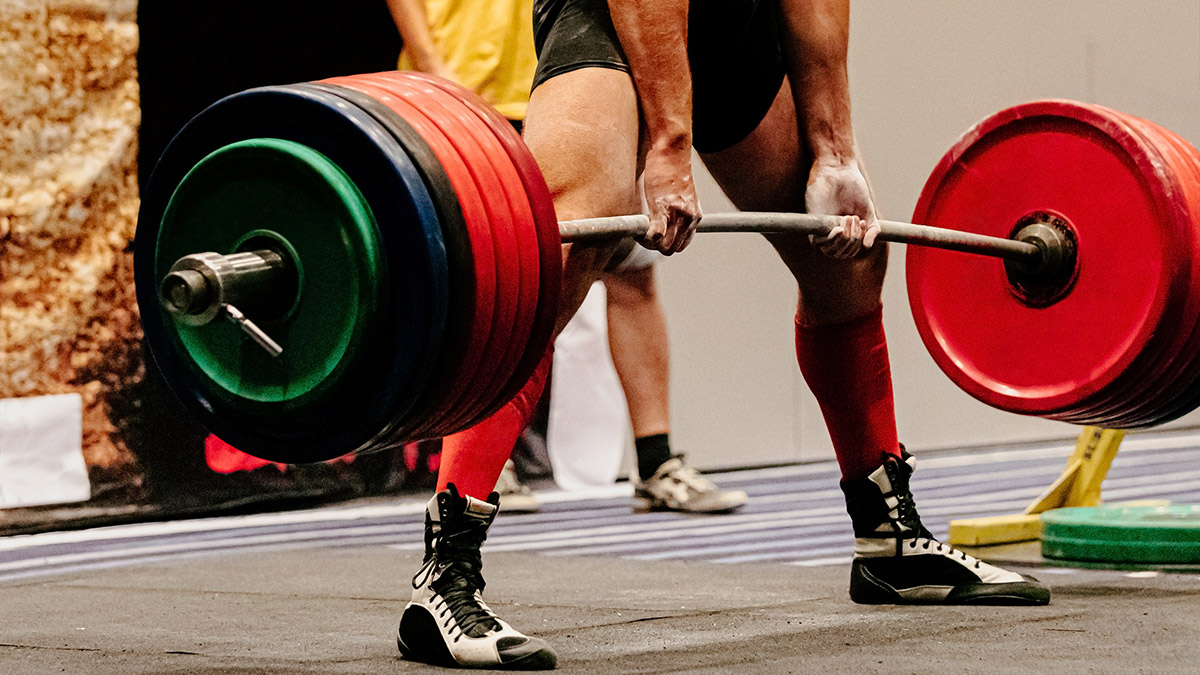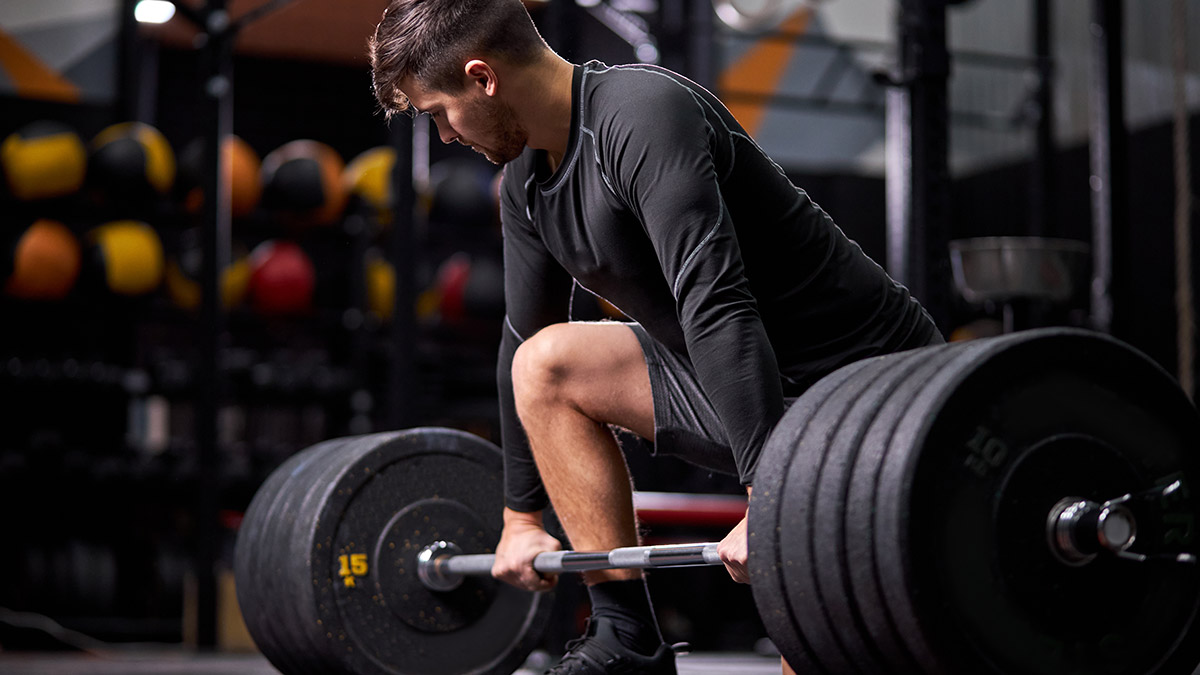Want to Build Muscle? This Is Whether You Should You Go for Heavy Weights or More Reps

Figuring out a workout routine is arguably the most important part of any strength training journey. Without a proper game plan, you’re going to struggle to see decent results, because measuring your metrics helps you to gradually nudge the difficulty level over time.
But when it comes to training smart, there’s one question that regularly divides gym-goers: should you opt for pressing a heavy set of dumbbells that fatigue you quickly, or do you downgrade to lighter weights so you can pump out a ton more reps?
The answer, it seems, isn’t simple.
To help us take out the guesswork, we spoke to Ali Malik, PT and founder of Fit Labs Kensington to find out which tactic is better for building muscle, why weight and reps matter, and how to choose the right weight range for your current fitness level.

Heavy weights vs more reps: what’s the difference?
If you’re used to alternating between heavy weights and high-rep sessions, you’ll know that both approaches can build a decent sweat and leave you aching the day after.
In general though, most fitness professionals agree that heavy weights with fewer reps are the most effective strategy for building muscle mass, while more reps with lighter weights increase your muscle endurance.
You only need to look at powerlifters for living proof of this theory. There’s a good reason why the red-faced Olympians you see throwing weights around on TV have bulging, well-developed muscles. By prioritising pairing very low reps (we’re talking just four or five) with beefy, hard-to-handle weights, they’re able to push their muscles to their absolute limit in just a few overhead presses.
This strategy results in those well-defined peaks and troughs because the gargantuan weight resistance recruits more Type 2 muscle fibres. Concentrating your efforts on these hard-to-engage slow-twitch fibres can lead to greater muscle hypertrophy (the fancy word for muscle growth), as pushing yourself into a heavier weight class causes your muscles to adapt and grow stronger in order to rise to the challenge.
Here’s where it gets complicated though: lighter weights come with their own unique benefits. By doubling down on lower KGs and going for a high-rep workout instead, you activate a different kind of muscle fibre called ‘Type 1’, which has less brute power but is much harder to fatigue.
These capillary-rich fibres aren’t as prone to impressive hypertrophy, but they still matter to your workout goals because they help to build all-important endurance – the unique ability for your muscles to perform exercises without hitting the pain wall too quickly.
For this reason, you’ll often see long-distance runners, cyclists and swimmers focus on building Type 1 muscle strength by selecting lighter weights and going for double-figure reps instead. While it might not pack on the same shirt-filling brawn, it builds a different type of lean muscle, and provides them with the all-important juice they need to keep powering through the hardest yards.

Heavy weights vs more reps: which is better?
Confusingly, the answer is both.
“The choice between heavier weights and more reps really all depends on a person’s individual fitness goals,” says Malik. “If you’re aiming for strength and muscle mass, I’d recommend prioritising heavier weights, but if you’re looking for endurance and definition (if you’re training for a marathon, for example) you should probably lean towards higher rep ranges with lighter weights.” FYI: if your goal is weight loss, studies have found that both techniques can help you burn calories and lose weight.
The tricky thing though, is that it’s not always a one-size-fits-all approach. Most people want to aim for a bit of both: increased strength and a solid level of endurance. For this reason, alternating between the two methods might be the best strategy for long-term success.
“Lifting heavy weights builds muscle, but constantly upping the weight puts a lot of pressure on the body, which can easily lead to plateau or injury,” explains Malik.
When you start lifting heavier weights, it’s not just your muscles that are affected either; your nervous system plays a role too. Your brain relies on this in-built system to send signals to your muscles to contract, but constant heavy lifting without rest can lead to neural fatigue, where the nervous system becomes less responsive and efficient due to chronic overload.
“Giving your muscles a break by lifting lighter weights with more reps, as well as scheduling proper rest days, gives the muscle tissue and nervous system a chance to recover while also building endurance,” Malik clarifies.
While endurance is obviously a deal-breaker for disciplines that require prolonged effort, you shouldn’t overlook its importance outside of the gym. Even if your overall goal is to bulk up, maintaining muscle endurance can help elsewhere, such as tackling basic, everyday activities like carrying shopping, running for the bus or climbing the stairs in your building without getting quickly puffed out.
“To optimise your results and prevent a plateau, I recommend taking a smart hybrid approach, where you combine training phases of high-intensity and low-rep strength training with periods of higher rep ranges,” Malik concludes.

How to know which weight is right for your goals
Finding the right weights for your workouts is a delicate balancing act between challenging yourself and maintaining proper form and technique. Get it wrong and you can put yourself out with an injury pretty quickly.
It starts with determining your one-repetition maximum (1RM). This is the technical term for the maximum amount of weight you can lift for a single repetition with proper technique. By knowing your 1RM, you can keep an eye on your progress and determine the right weight to lift based on your training goals.
Finding your 1RM involves performing a maximal effort lift for a single repetition with progressively heavier weights until you reach a load that you can’t lift for another repetition. Obviously, you need to approach this type of testing safely, using proper technique and an adequate warm-up, as pushing your body requires a bit of prep.

Once you’ve established your 1RM, you can start mixing and matching your workouts to build full-body power and performance:
To build strength… opt for weights you can lift for one to five reps
As we’ve already explained, performing lower reps with heavier weights focuses on building strength. For bicep-building sessions, aim to lift weights that are around 85 to 100% of your one-repetition maximum (1RM). Make sure to take long rest periods between sets, to allow for full recovery between your maximum efforts.
To trigger hypertrophy… choose weights you can lift for six to 12 reps
This middling rep range strikes a balance between lifting heavy weights and performing enough quality repetitions to trigger muscle fatigue and metabolic stress. Malik recommends choosing weights that are around 65-85% of your 1RM, while aiming to perform between six to 12 repetitions per set.
To work on endurance… go for weights you can lift for 12 or more reps
Don’t be fooled by the guys clutching small weights in the gym. Higher rep ranges with lighter weights supercharge your athletic performance. This range helps improve the muscles’ ability to sustain repeated contractions over an extended period, which helps reduce the overall risk of injury.To tap into this unique power, select weights that are around 50-70% of your 1RM and aim to perform 12 or more repetitions per set. Job done.


















